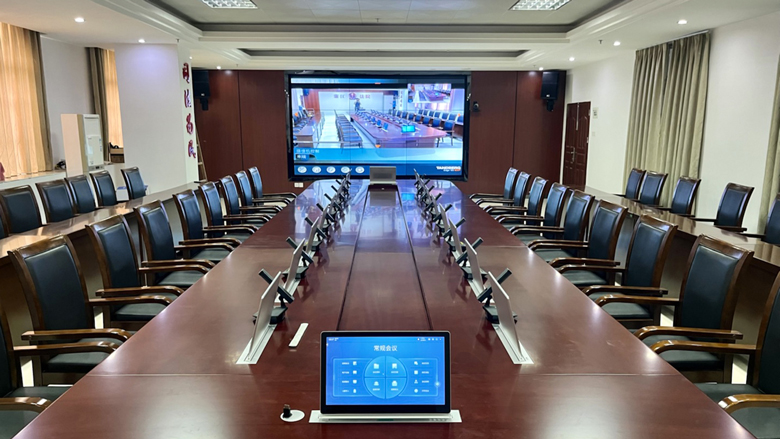

Leave a message


Implementation of functions such as conference check-in, file distribution, file uploading, file synchronization demonstration, and voting.

The management side of the paperless conference system has rich management and setting functions, including device management, seat editing, attendance management and background setting. These functions are used to manage and set the conference room seats, terminal devices, and conference attendance.
It can add or delete the Mac address of the participating tablet, edit seat numbers, and add or delete seats.
It is used to manage the seating arrangement of conference room participants, attendee names, and other information.
It can see the attendance status of all conference attendees in real time and can view the attendance names and check-in time of specific seats. At the same time, the attendance of this meeting can be exported.
The conference data can be classified, and the meeting assistant can set the data usage rights when uploading the data on the management side. Attendees can freely view and annotate documents with permissions.
The meeting assistant can choose the background of the conference room or customize a new template. After setting it, the background will be sent to all attendees uniformly.
Participants can read existing documents and can make synchronous handwritten annotations during the reading process. When the speaker synchronizes local operations to all personnel, all attendees can choose to watch the conference file demo synchronously or view other meeting materials independently (mainly including commonly used Word, PPT, and other documents) while watching.
The meeting assistant can edit the conference agenda on the management side and publish it. After publishing the conference agenda, all attendees can view the specific content of the conference agenda on their local pads. The meeting assistant can also switch the conference agenda to the big screen, and all attendees can see the content of the big screen conference agenda without operating it.
When all attendees need to participate in opinion voting, the meeting assistant can directly initiate the voting on the management side. The voting content is all multiple-choice questions, and the meeting assistant uniformly edits the voting content and options. Attendees can select specific options and do not need to input Chinese characters. After the meeting assistant edits it, he/she can send it to the attendee terminal, and everyone can vote with their own terminals. The meeting assistant can also display the voting content and options on the big screen for on-site voting. After the voting is over, the meeting assistant can save the voting results or display them on the big screen for all attendees to view.
During the meeting, the meeting assistant can use the "send message" function to send messages to all attendees or a specific attendee. After receiving the message, attendees can choose to reply. For example, during a meeting, if there is an emergency event that needs to be handled by the leader immediately, the meeting assistant can send a message directly to the leader, which does not affect the normal conduct of the meeting, and the leader can handle the emergency event in a timely manner.
The archiving of meeting content is supported, including archiving of meeting files, meeting conclusions, and file annotations used in the meeting. At the same time, the meeting assistant can manage the saved archiving content after the meeting.
Conference service function can provide various services needed for conference attendees during the meeting. For example, if attendees need paper, pens, tea, or other help, they can send a message to the management side through the conference service option. After receiving the message, the meeting assistant can provide assistance to attendees according to the requirements.


 【DSPPA Demo】PAVA8000 EN54 Voice Evacuation SystemNovember 12, 2020Abstract: DSPPA PAVA8000 EN54 Voice Evacuation SystemToday, we are gonna show you a demo about our PAVA8000 EN54 Voice Evacuation System.PAVA8000EN54 Voice Evacuation System can not only support manua...view
【DSPPA Demo】PAVA8000 EN54 Voice Evacuation SystemNovember 12, 2020Abstract: DSPPA PAVA8000 EN54 Voice Evacuation SystemToday, we are gonna show you a demo about our PAVA8000 EN54 Voice Evacuation System.PAVA8000EN54 Voice Evacuation System can not only support manua...view The National Standard Approval Meeting held in BeijingJuly 19, 2019The National Standard Approval Meeting held in BeijingThe approval meeting of the National StandardTechnical standard of public address system engineeringis held in Beijing on July 16, 2019. Xue Chang...view
The National Standard Approval Meeting held in BeijingJuly 19, 2019The National Standard Approval Meeting held in BeijingThe approval meeting of the National StandardTechnical standard of public address system engineeringis held in Beijing on July 16, 2019. Xue Chang...view